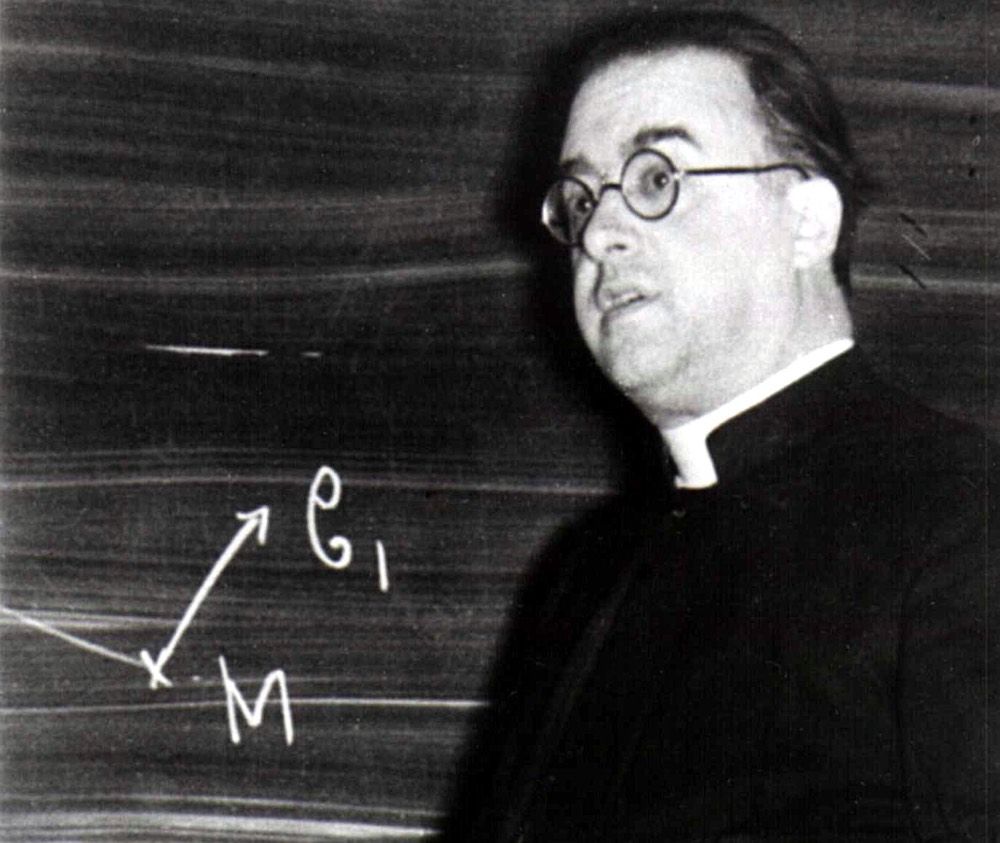Why Georges Lemaître Should Be as Famous as Einstein

Young students lucky enough to benefit from a science education will likely recognize Albert Einstein, Isaac Newton, Galileo Galilei, Charles Darwin, Marie Curie, or Gregor Mendel. But ask them about Georges Lemaître and they'd probably be stumped.
Indeed, the man who first proposed that the universe is expanding and formulated the theory of the Big Bang is scarcely recognized by Google. Search for "famous scientists" and scroll through the horizontal list that pops up. Lemaître is nowhere to be seen.
To be fair, there are a number of worthy contenders to science fame, but I argue that Lemaître is truly a cut above the rest. An honest examination of his life and accomplishments should place him next to Einstein as one of the greatest scientists who ever lived.
Georges Lemaître was born in Charleroi, Belgium in 1894. Bright and curious, he would earn his degree in engineering nineteen years later. But before he could set about beginning a new career, war engulfed Europe. Lemaître fought bravely in World War I against the invaders from the Central Powers, earning Belgium's equivalent to America's Silver Star. Afterwards, he returned to school to earn a doctorate in mathematics, then turned down academic offers to pursue a lifelong passion: priesthood.
Lemaître's spirituality flourished over the next few years, but this did not diminish his scientific aspirations one bit. Upon being ordained in 1923, he traveled to Cambridge, Massachusetts to study astronomy at Harvard Observatory, while at the same time earning a doctorate in physics from MIT. Two years later, he finally began his academic career as an associate professor of mathematics at the Catholic University of Leuven.
In 1927, Lemaître proposed that the Universe is expanding, deriving the notion mathematically from Einstein's theory of relativity. When Einstein and Lemaître met that same year, Einstein told him "Your calculations are correct, but your physics is atrocious." Einstein did not question the math, but he could not accept the finding. When Edwin Hubble discovered astronomical evidence of expansion two years later, Lemaître's theory was confirmed. Einstein, along with the rest of the physics community, was convinced.
At the same time, a more existential question was born: If the universe is expanding, does that mean it originated from a specific point in time and space? In 1931, in a now legendary paper published to the journal Nature, Lemaître answered "yes." The universe began as a "primeval atom," he argued. Today, this idea is better known as the Big Bang.
Sign up for the Live Science daily newsletter now
Get the world’s most fascinating discoveries delivered straight to your inbox.
More than 80 years later, Georges Lemaître's theories are widely known, yet he his not. Gracious and humble until his death in 1966, Lemaître would not lament his lack of fame if he were alive today. But it is this attitude that starts to showcase why he should be better known. Lemaître should be mentioned in every science classroom not just because he was a great scientist, but because he was also a great person, something that can't necessarily be said of other, more prominent, scientific idols.
Throughout his adult life, Lemaître straddled both science and religion, often receiving harsh criticisms from naysayers in both disciplines. Scientists accused him of trying to promote creation with cosmology. Not helping this perception was the fact that Lemaître wore his clerics all the time, even at scientific meetings. At the same time, believers accused him of placing constraints on God. When Lemaître heard that Pope Pius XII intended to speak to members of the International Astronomical Union in Rome, he urged the Pope's advisors to ask the Holy Father to refrain from using his findings as evidence for divine creation.
"Professor Lemaître wanted his scientific theories to be judged exclusively on their physical merit, keeping metaphysical implications completely separate," Joseph R. Laracy wrote.
Lemaître believed that science and religion must be separate, but at the same time, he also believed they could co-exist.
"Should a priest reject relativity because it contains no authoritative exposition on the doctrine of the Trinity?" he wrote. "Once you realize that the Bible does not purport to be a textbook of science, the old controversy between religion and science vanishes..."
Popular British science writer Simon Singh, who founded the Good Thinking Society, excellently sums up Lemaître's views on science and religion:
"He said that there were two ways of arriving at the truth, and he decided to follow them both. If he wanted to explore issues of morality, ethics, and spirituality, he would look at his Bible. But if he wanted to understand the universe… he would do experiments."
Just as important as his contributions to knowledge, Lemaître showed incredible genius in rationally reconciling two competing notions that still divide peoples today: science and religion. His way of thinking — measured, considerate, rational -- is a blueprint for peace and understanding. We all can, and should, learn from his example.
Original article on RealClearScience.













